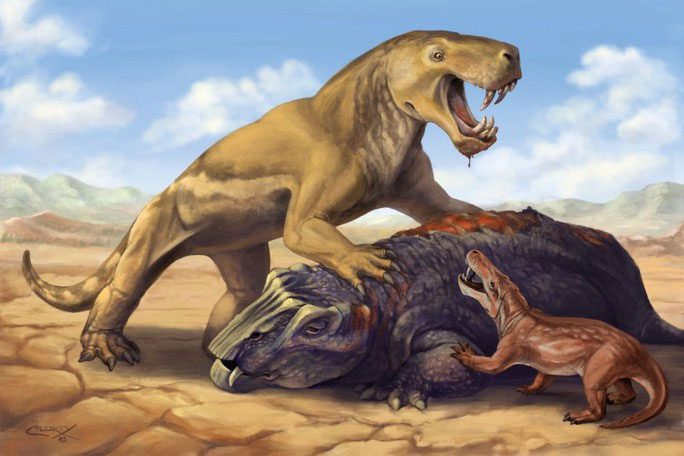A fierce and strange beast that lived on the supercontinent Pangea during the Permian period has been resurrected from the Karoo Basin in South Africa.
This creature resembles an ancient version of the saber-toothed tiger, living around 252 million years ago, which is during the Permian period, the geological era just before the Triassic when the first dinosaurs appeared.
According to Sci-News, these are the Inostrancevia, whose fossils recently uncovered in South Africa indicate they migrated 11,300 kilometers across Pangea, filling a gap in the paleontological record of a lost ecosystem, with top carnivores that mysteriously went extinct.

Inostrancevia Permian Beast – (Graphic image: Matt Celeskey).
Dr. Pia Viglietti, a paleontologist from the Field Museum of Natural History (USA) and the University of Witwatersrand (South Africa), stated: “All the major top predators of the late Permian in South Africa went extinct even before the mass extinction at the end of the Permian.”
In the brief period when these known predators were absent, Inostrancevia appeared.
It is described as being the size of a modern tiger, with thick skin that is difficult to penetrate like that of a rhinoceros or an elephant, and a body shape somewhat resembling that of a dinosaur.
Despite its unusual appearance, Inostrancevia is part of a group of ancient animals that includes modern mammals.
Earlier, some scarce fossils had been discovered in Eastern Europe. However, its migration all the way to South Africa is completely surprising. It is called migration because it was indeed native to what is now Eastern Europe, not to the region that is today South Africa, although at that time, all landmasses were part of a single supercontinent.
Local carnivores had actually gone extinct long before the major Permian extinction event, of which the Karoo region is a part. The Inostrancevia beast appeared to fill that gap but then disappeared abruptly just as the mass extinction began.
This discovery helps to further fill the complex picture of how life on Earth has faced mass extinctions, as well as their efforts to adapt and migrate to avoid the impending disasters.
This also confirms that apex predators in modern environments tend to show a high risk of extinction and are often among the first to go extinct locally when environments change, due to both natural and human factors.
The research has just been published online in the journal Current Biology.


















































